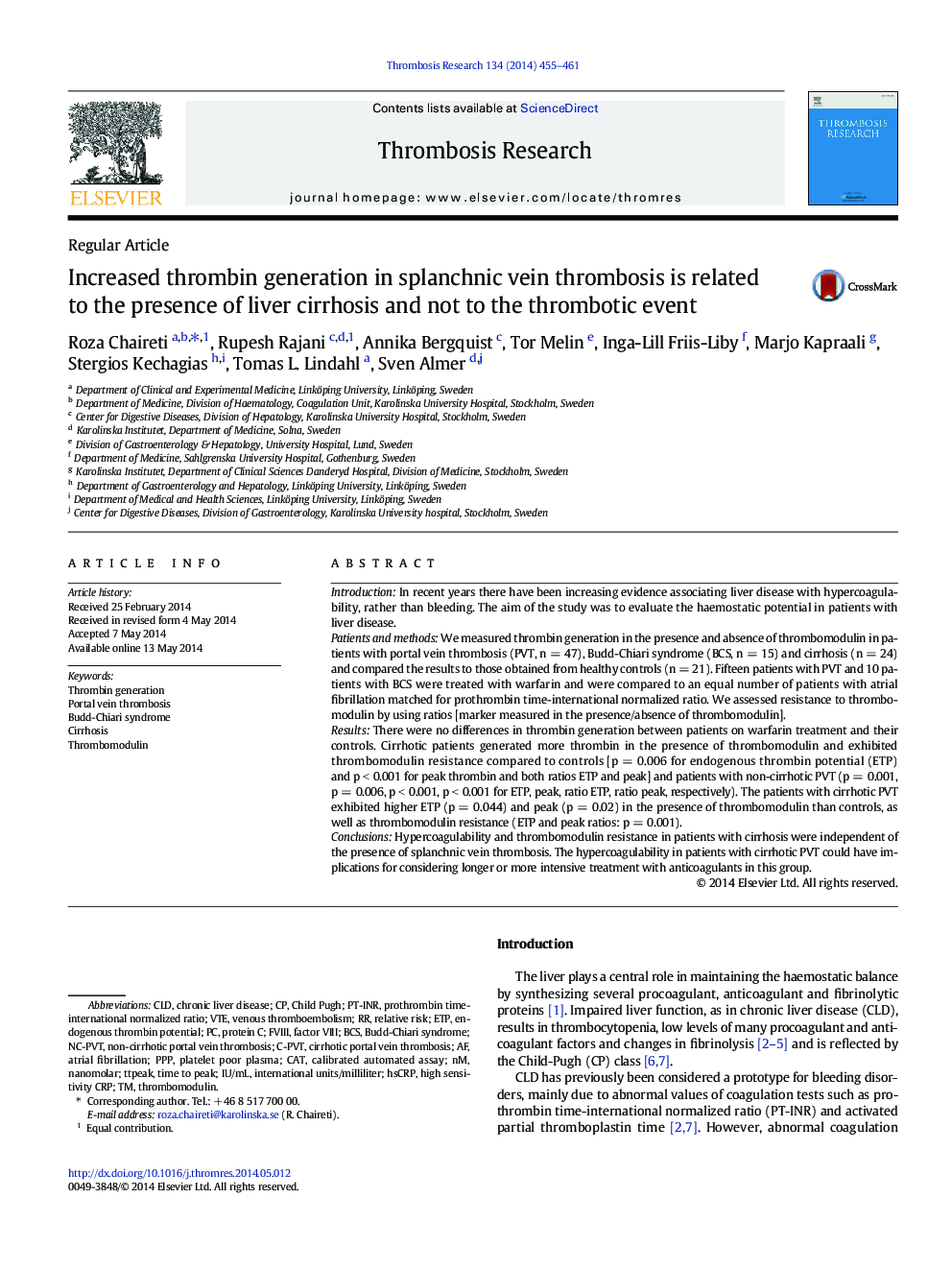| Article ID | Journal | Published Year | Pages | File Type |
|---|---|---|---|---|
| 6002362 | Thrombosis Research | 2014 | 7 Pages |
IntroductionIn recent years there have been increasing evidence associating liver disease with hypercoagulability, rather than bleeding. The aim of the study was to evaluate the haemostatic potential in patients with liver disease.Patients and methodsWe measured thrombin generation in the presence and absence of thrombomodulin in patients with portal vein thrombosis (PVT, n = 47), Budd-Chiari syndrome (BCS, n = 15) and cirrhosis (n = 24) and compared the results to those obtained from healthy controls (n = 21). Fifteen patients with PVT and 10 patients with BCS were treated with warfarin and were compared to an equal number of patients with atrial fibrillation matched for prothrombin time-international normalized ratio. We assessed resistance to thrombomodulin by using ratios [marker measured in the presence/absence of thrombomodulin].ResultsThere were no differences in thrombin generation between patients on warfarin treatment and their controls. Cirrhotic patients generated more thrombin in the presence of thrombomodulin and exhibited thrombomodulin resistance compared to controls [p = 0.006 for endogenous thrombin potential (ETP) and p < 0.001 for peak thrombin and both ratios ETP and peak] and patients with non-cirrhotic PVT (p = 0.001, p = 0.006, p < 0.001, p < 0.001 for ETP, peak, ratio ETP, ratio peak, respectively). The patients with cirrhotic PVT exhibited higher ETP (p = 0.044) and peak (p = 0.02) in the presence of thrombomodulin than controls, as well as thrombomodulin resistance (ETP and peak ratios: p = 0.001).ConclusionsHypercoagulability and thrombomodulin resistance in patients with cirrhosis were independent of the presence of splanchnic vein thrombosis. The hypercoagulability in patients with cirrhotic PVT could have implications for considering longer or more intensive treatment with anticoagulants in this group.
